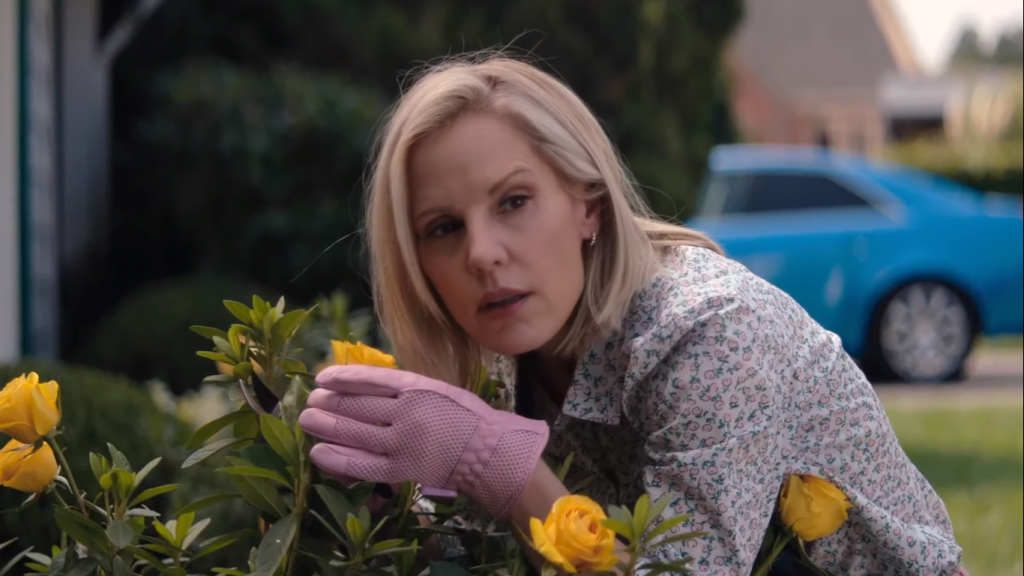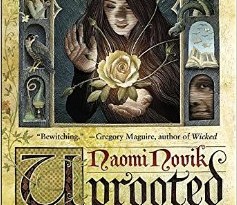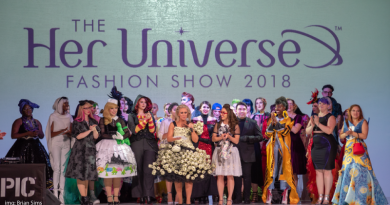Foresight: Speculating Wanda’s Present By Looking To Her Future

Going into the WandaVision finale, the discussion around the series has generated numerous takes on how Wanda’s story will conclude. Who is the Big Bad? What will happen to the twins, Billy and Tommy? Isn’t it going to be sad to watch Vision die again when the Hex inevitably comes down? Previous iterations of Wanda’s story in the comics – such as House of M, a 1980’s West Coast Avengers run, and Vision Quest – have certainly influenced the story. Like the Marvel Cinematic Universe movies before it, though, WandaVision’s creative team doesn’t appear to be beholden to the past, particularly its regressive tropes around female characters. Like Captain Marvel, which paid homage to its comic past but charged bravely forward into a new type of origin story, WandaVision has been showing us all along that it is committed to evolving the Marvel franchise into something different and unique to our time.
Instead of looking to comic books of the past and applying classic patriarchal tropes, it would be prudent to consider how Marvel plans for the future of the story when speculating about WandaVision’s ending. Here are a few things that are widely known, yet don’t come up very often in speculation pieces.
First, WandaVision is a stand-alone story. While it enriches the past and future of the MCU, Marvel Studios head Kevin Feige has expressed that the show is meant to stand on its own. Showrunner Jac Schaeffer has talked about the show being an allegory for the time in which it exists. This appears, for example, in the meta of witches and the witch trials. Schaeffer has also stated that Wanda’s agency is a key concept. Despite this statement by the showrunner, many took “Agatha All Along” at face value – that Agatha Harkness is the antagonist who set in motion the events of the series – when in fact the next episode revealed the Hex and its ramifications, from holding people captive to providing the power to reboot White Vision, are all derived directly from Wanda’s choices and actions. To some extent, “Previously On…” reveals that Director Hayward manipulated the circumstances and hoped for a particular outcome, because he is certainly not on a power-level to compel Wanda into magically bringing Vision back online. Yet still, some persist with the notion that the last episode will reveal a Big Bad who will have masterminded the entire situation from the start. When the showrunners says she wants to keep Wanda’s agency intact, why is it so hard to take that at face value?

In last week’s episode, Agatha Harkness manipulates Wanda. It took quite a bit of gathering intelligence, making the most of specific opportunities, and expertly applying magic for the experienced witch to gain the upper hand. The opening scene with Agatha magically bound to the stake provides clues for how the stand-off between Wanda and Agatha may go down. Agatha has been posed with the same question her Mother had long ago. In 1693, Agatha was something unique and powerful to the Salem coven; they feared her. (The implication is that they feared she was the Scarlet Witch, who had to be eliminated while it was still possible to do so.) In 2023, Wanda is a unique and powerful presence in Westview; as Vision has pulled people out of their trances, the fear of its residents is undeniable. Outside the bubble, Wanda poses an unimaginable threat in an unprecedented time. Extrapolating back to the Salem witch trial era, also a time of societal transition and upheaval, one has to assume exposure of Agatha as a superpower might not just threaten her coven sisters, but also put an even bigger mark on witches in general. As Agatha Harkness hovers above Wanda with Billy and Tommy forcefully restrained, she sees Wanda through the eyes of her coven mother: a threat to witches and possibly the world. Agatha can repeat the cycle of trauma, or Agatha can prove that she “can be good,” that she can trust in what she has seen from Wanda in their sojourn through her traumatic past.
If you consider the position of Kevin Feige, showrunner Jac Schaeffer, and Marvel Studios, the inevitable question when creating WandaVision was: what does the Marvel Cinematic Universe need in regards to Agatha Harkness? The idea of more badass female villains like Hela (Thor: Ragnarok) probably came up. But in a show that’s trying to challenge the tropes around witches, do you recreate the longstanding trope of a Good Witch and a Bad Witch, women in opposition, or do you hew closer to recent storytelling like Descendants and Maleficent that show alliances between powerful magically-inclined women. While the MCU certainly needs more female villains, what does Wanda need based on the story presented in WandaVision? She needs a mentor.
Agatha Harkness’ backstory creates a stark parallel to Doctor Strange, who also sought to learn about power before he was ready. Strange was fast-tracked into the role of the Sorcerer Supreme. Agatha, on the other hand, was sentenced to execution. The storytellers put this rhyme in WandaVision deliberately. As a potent but untrained witch, Wanda’s Chaos magic is a threat. In her role in the upcoming movie Doctor Strange in the Multiverse of Madness, the Scarlet Witch could learn a thing or two in her adventures with the sorcerer, a master of Eldritch magic. The Salem witch trial scene indicates Agatha, who glows red internally as she fights off the blue magic of her coven, knows more about Chaos magic than she has admitted to Wanda thus far. Giving Wanda a female mentor who has direct knowledge of her powers seems a more likely scenario for the resolution of their relationship in WandaVision. That conclusion also aligns with past lore in the comics, where Agatha’s alliance with the Scarlet Witch originated. This would add a new superpowered female magic-user to the MCU, one who could guide and mentor Wanda on her Witch’s Journey.
The brooch Agatha Harkness snatches from her coven mother’s desiccated body could also be a clue that Agatha Harkness won’t be the only witch ally in Westview. The brooch shows three women, a nod to the trope of the Hecate Sisters, which has a long standing presence in literature, television, and movies. Shakespeare’s MacBeth has inspired countless reimaginings, with the foresight of the three witches permeating through pop culture. A witch trio can represent different ages, such as the Sanderson sisters in Hocus Pocus, or a cluster of archetypes like the three fairies in Sleeping Beauty or Mal, Evie, and Uma in Descendants. In the lore of witches, they are often presented as capable of great feats when their magic is combined, as was depicted in Charmed and The Craft. In an interview with WandaVision director Matt Shakman at Entertainment Weekly after last week’s episode, he says about the ending: “[W]e’re always telling this story about Wanda dealing with grief and learning how to accept that loss, and hopefully people will find that the finale is surprising but also satisfying, and that it feels inevitable because it’s the same story they’ve been watching the whole time.” Essentially he is reminding us to look for clues to the conclusion in the story so far.
“I’ve heard things about you. You and your husband.”
“Well, I don’t know what you’ve been told, but I assure you I don’t mean anyone any harm.”
“I don’t believe you.”
~ “Dottie” Jones and Wanda Maximoff in WandaVision Episode 2

WandaVision has shown us a brunette witch and a red-headed witch. All we need is a blonde witch to make a witch trinity. The second episode introduced a blonde, “Dottie,” who hasn’t made her way to Agent Woo’s board of missing persons. Like ”Agnes,” Wanda’s neighbor to the right, “Dottie” was revealed as the neighbor in the other adjacent house. (Remember “on your left”?) As Monica Rambeau faced off with Wanda, “Dottie” watched from behind her yellow roses that “bloom under penalty of death.” In “Don’t Touch That Dial,” “Dottie” serves as leader of the women’s club and the Westview Talent Show. While she’s speaking to Wanda one-on-one, Jimmy, with Darcy’s help, is able to break through the Hex on the radio. Perhaps “Dottie” is dampening Wanda’s magical control? “Dottie” shatters the glass in her hand, and we see the red of blood on her palm, breaking through the illusion of Wanda’s black-and-white sitcom alternate reality. The whole exchange with Wanda bussing the dirty dishes comes across as “Dottie” in search of the truth, much like Agatha. The pool meeting could serve as an allusion to a coven meeting. The “for the children” mantra could be interpreted as a spell, rhyming with the Salem coven’s magical incantations.
If one witch was drawn to Westview because of the afterglow of a thousand spells, it’s likely others were, too. Some have questioned why Doctor Strange hasn’t sensed the magic, and given how well the story has been told thus far, it’s safe to conclude the creative team asked that question, as well. The answer is: he has. Referencing comic lore, “Dottie” could be Clea, a magic-wielding character who has strong ties to Doctor Strange. It’s also possible she is Arcanna Jones, a comic character with a multiverse connection – and who’s married to an ordinary mortal named Phil Jones, who also happens to have the same name as “Dottie’s” husband in Westview. With episode 8 revealing the residents of Westview before Wanda casts the Hex, I am less inclined to believe Arcanna, husband to Phil Jones, is her true identity; rather, her proximity to Phil seems to be an Easter egg hint that she’s a supernatural character. “Dottie” and Agatha showing Wanda the way toward her future would be a nice endcap to a show that acknowledges and moves beyond regressive representations of powerful women across storytelling.
What about Vision, Billy, and Tommy? That answer too lies in what the future storytelling needs. By all accounts, the Scarlet Witch is going to be an alpha superhero like Superman. What are Superman’s weaknesses? Kryptonite and his family. Rewatching the Halloween episode with the knowledge of last week’s episode, it appears Wanda herself is the reason Vision can’t survive outside the Hex. It’s not that he can’t exist beyond the Hex, but that she simply doesn’t want him to leave the cocoon of the sitcom world. Agatha is pushing Wanda to understand what she has done to the townsfolk and to her new family. But that requires her to make a cohesive narrative of her pain so she can move on with her life and accept responsibility. In this case, the acceptance phase of grief will yield the boon of a family created from her solitary sorrow in a stunning display of her powers. That family, and the vulnerability it presents for her, will be the tool with which the MCU will counter Wanda’s goddess-like powers going forward.
- Hyperspace Theories: Bad Luck Ghorman - June 2, 2025
- Hyperspace Theories: One Year Later as ANDOR Kicks Off Season Two - May 15, 2025
- REVIEW: Tales of the Underworld - May 4, 2025











